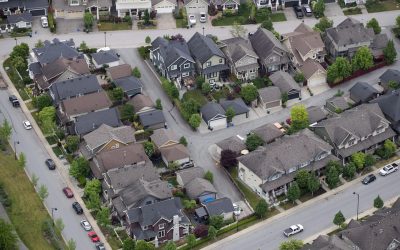A recent international study scanning median housing prices against incomes in six countries ranked Winnipeg high with respect to overall affordability. The report suggests that the cost of buying a home in Winnipeg is an affordable 2.5 times the median household income. Winnipeg’s affordability ranked ninth overall, with prices comparable to that found in Wichita, Kan., Toledo, Ohio, and Omaha, Neb. The least affordable market was Orange County, Calif., where it takes an astonishing 11.4 times the median income to afford a home. Incidentally, the most affordable city was a tie between Regina, Fort Wayne, Ind., and Youngstown, Ohio.
However, a key question not addressed in the study by the Frontier Centre for Public Policy is whether Winnipeg really is that affordable after all.
To put this in perspective, the City of Winnipeg pegs the average age of housing at about 55 years. This ranks Winnipeg as one of Canada’s oldest cities with respect to the average age of housing. While an older housing stock does not necessarily equal poor-quality or low value, it does compound the problem, especially when taking into account that Winnipeg has nearly 24,000 homes that need major repairs (also high among Canadian cities).
It is also the bulk of these homes that has undoubtedly lowered overall assessed values and dragged down the city’s average, making it appear more affordable than it really is.
It might be easy to jump to the conclusion that most of these dilapidated and older homes are concentrated in the inner city of Winnipeg. However, while there is no dispute that the inner city contains a higher percentage of poor quality and lower-valued homes, there are other concentrations of urban distress that also make the city appear more affordable.
To explain, of the 24,000 homes needing major repair (9.5 per cent of all city homes) a third – or just under 8,000 – are in the inner city while a full two-thirds (or 16,000) are scattered about the city’s 200-plus neighbourhoods.
It is also not surprising that 43 per cent of the inner-city homes in need of major repair were built more than 80 years ago. This finding alone helps explain the higher level of decline in housing quality and lower prices in the inner city. But outside of the inner city the same situation exists with 67 per cent of homes needing major repairs being built more than 45 years ago.
Strategies to deal with an aging and undervalued housing stock are complex and have vexed politicians for more than 40 years. This includes the failed attempts that focused on the demolition and replacement of older housing during the 1960s. More recent efforts have had an emphasis on renovation and repair and are heavily concentrated in the inner city where needs are greatest. But with 16,000 decaying homes outside of the target zone, are we missing an emerging crisis that may create the false impression that Winnipeg is more affordable than it really is?
According to authors William Lucy and David Phillips, there is rising speculation that suburban decline, a largely American phenomenon, is expected to begin to take hold in nondescript places like Winnipeg. While suburban decline may emerge as a less visible urban crisis, it will be a crisis nonetheless.
Lucy and Phillips contend that suburban decline will be most evident in ordinary residential subdivisions built during the post-war boom extending to 1970. For Winnipeg (excluding the inner city), a full 40 per cent or 79,500 homes were built during this period (1946 to 1970). What may be a cause for concern already is that nearly half – or 7,600 of the Winnipeg homes needing major repair that are located outside of the inner city – were built during this period.
What remains unknown is whether the nearly 80,000 homes built between 1946 and 1970 will remain well cared-for as they continue to age and require more investment. Given that most of these homes are approaching or have exceeded 40 years of age, they are reaching a critical juncture – where avoiding costly renovations will begin to shift the character of the area. It is at this point where residents will ultimately decide either to continue to invest in repairs and maintenance or sell.
While one might take the narrow view that the rapid rise in housing prices in Winnipeg since 2001 means that the quality of homes has also improved, this might not necessarily be the case. In fact, just because a home built in 1950 that was worth $75,000 in 2001, rose to $150,000 today does not mean its quality improved as dramatically as the price.
Going back to the issue of affordability versus quality, Winnipeg still has an abundance of affordably priced homes. Many of these are located in stable neighbourhoods, offering choice and quality. But ranking Winnipeg as a highly affordable city may be somewhat misleading without consideration of other factors such as the condition of the home and the rising costs associated with the maintenance and operation of an aging housing stock. There is little doubt that the next 10 years will mark a critical period for many of the homes built during the post-war boom.
The question is whether these smaller nondescript homes in quiet neighbourhoods will remain desirable as people continue to be drawn to larger homes with the latest amenities in newer suburban realms. If there is any doubt that decline can occur in a stable suburban neighbourhood, it might be worthwhile taking a tour of some of Winnipeg’s older neighbourhoods currently mired in decline and ask the simple question: did the original owners of some of these old mansions in the inner city – with their imported materials, inlaid wood floors, ornate exteriors and other high end touches – really think for one minute that their castle would one day end up as a rooming house or triplex?
Jino Distasio is director of the Institute of Urban Studies at the University of Winnipeg.


